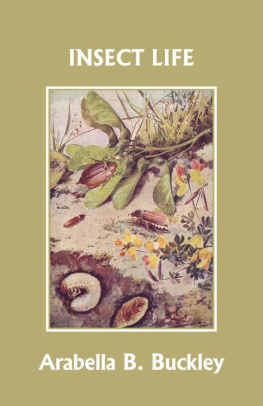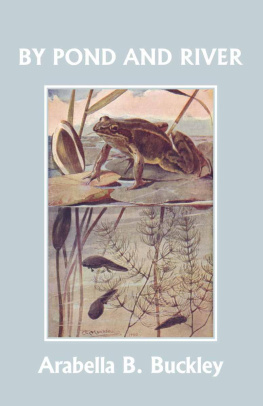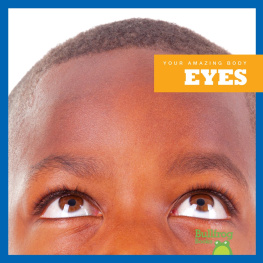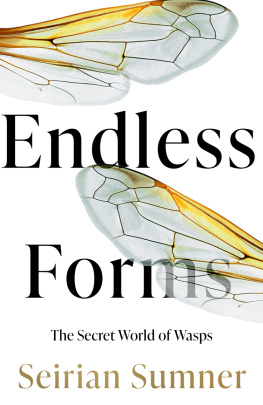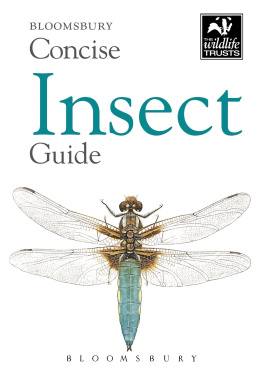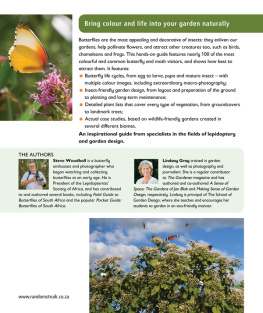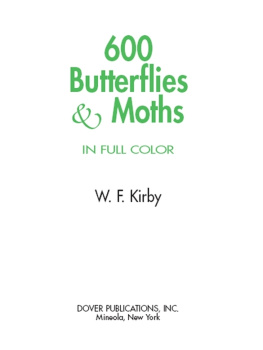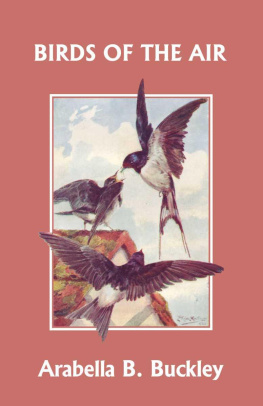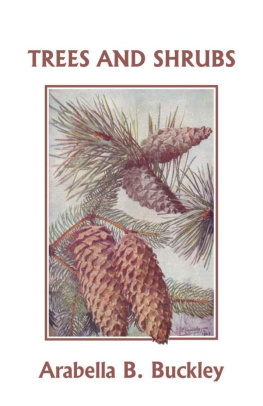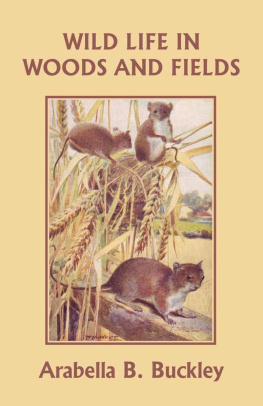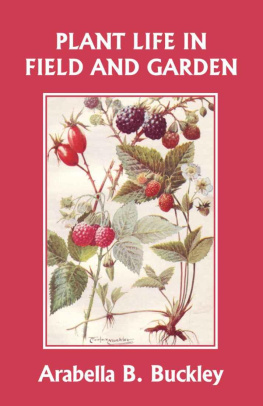Insect Life
by
Arabella B. Buckley
Yesterday's Classics
Chapel Hill, North Carolina
Cover and Arrangement 2010 Yesterday's Classics, LLC
All rights reserved. No part of this book may be reproduced or retransmitted in any form or by any means without the written permission of the publisher.
This edition, first published in 2010 by Yesterday's Classics, an imprint of Yesterday's Classics, LLC, is an unabridged republication of the work originally published by Cassell and Company, Ltd. in 1901. This title is available in a print edition (ISBN 978-1-59915-276-9).
Yesterday's Classics, LLC
PO Box 3418
Chapel Hill, NC 27515
Yesterday's Classics
Yesterday's Classics republishes classic books for children from the golden age of children's literature, the era from 1880 to 1920. Many of our titles are offered in high-quality paperback editions, with text cast in modern easy-to-read type for today's readers. The illustrations from the original volumes are included except in those few cases where the quality of the original images is too low to make their reproduction feasible. Unless specified otherwise, color illustrations in the original volumes are rendered in black and white in our print editions.
Contents
CHAPTER I
What Is an Insect?
I T is a lovely summer morning. Let us shut up our books and wander in the garden and field, in search of insects. The best way is to take a few card match-boxes with us, and drop one insect into each as we find them. Then when we get back to school, we can put them separately under tumblers.
Insects are so small that we often pass them by. But they form three-fourths of the whole animal kingdom, and they do us so much good and so much harm that we ought to know about them.
As we start I see a Cabbage Butterfly in the kitchen garden, and a beautiful Red Admiral flitting about among the flowers. We will take the Cabbage Butterfly, so that she may not lay her eggs on our cabbages.
Next stop at this rose-tree, there are a number of tiny insects, on the flower-stalks. If you look closely, you will see that each one has his beak buried in the stem, so as to suck out the juice. These are plant-lice. Each one is called an Aphis, and in the plural they are called Aphides.
We must syringe the tree with soft soap and tobacco water, or it will soon be covered with these insects, for they increase at the rate of more than a million in a month, and they stick out all the sweet sap from the plants to which they cling. On the same tree you will very likely find a Lady-bird, for she feeds on aphides.
Now look into the flower of this old Cabbage Rose, which grows in most cottage gardens. You are almost sure to find in it a lovely Rose-beetle with green shining wings shot with gold. Take it up and look at the bright wing-cases. While you are looking, it may open these cases and spread out the transparent wings underneath; but if it flies away you can easily get another.
Now, look! At your feet runs a beetle which is not half so pretty. It is the Cocktail, or Rove Beetle, often called the Devil's Coach-horse. As you pick him up he will cock up his tail and squirt out a very disagreeable fluid over your fingers, while he raises his head and snaps with his jaws. So drop him in his box quickly. The fact, is, he is terribly frightened, and hopes to make you set him free.
Now we will go out into the newly-mown field, and there you will see a number of small green Grasshoppers hopping about. They have been hatched under the earth-clods, and are eating the tips of the young grass. Some will have wings, but others, which are not fully grown, will have none. Pick one up and make him too a prisoner.
1. SPIDER 2. CENTIPEDE 3. DADDY-LONG-LEGS
Next try to find a Wasp or a Bee. You can pick it up in your handkerchief and drop it in its box. We must go down to the river to find a May-fly or a Dragon-fly, and near there we shall easily get a Daddy-long-legs. But if there is not one to be seen, a Blue-bottle or a Gnat will do.
4. & 6. GRASSHOPPERS 5. WASP
You will wonder that I have not asked for a Spider. You had better get one, and also a Hundred-legs or Centipede, if you can find it.
When you have put these specimens under their glasses, look carefully at them. You will find a difference between the spider, the hundred-legs and all the others. The spider has eight legs and the centipede a very great many, while all the others have only six.
Now look at the Grasshopper, the Wasp, and the Daddy-long-legs. You will see very clearly that their bodies are divided into three parts(a) the head; (b) the front body, on which the six legs and the wings grow; (c) the hind body, which has no legs on it, even when it is very long, as in the daddy-long-legs and the May-fly. You cannot see these divisions quite so well in the beetle because its wing-cases cover the join between the front and hind body.
We had better call these three divisions by their right names(a) head; (b) front body, or, thorax ; (c) hind body, or, abdomen . It is because insects are cut into these three parts that they have their name. It comes from the Latin "inseco" ( I cut into ). The Spider's head is not clearly divided from its body, and a Centipede has not three divisions. For this reason, and because they have not six legs, some naturalists separate them from the true insects. This is why I did not call them insects.
Another thing you can notice well in the little green Grasshopper: his body is divided into rings ( r ), from his tail up to his head; and you can see the same in the wasp and the daddy-long-legs, the aphis and the cocktail beetle. All insects have ringed bodies.
It is these rings which enable the Wasp to bend her abdomen ( c ) when she wants to sting and to breathe. You can see, as she stands, how it keeps moving up and down all the time. This is because she is breathing. How do you think she does it? Not through her mouth as we do, but through her sides.
If you look closely at the grasshopper you will see along the sides of his body, some little black dots, one in each ring. These are breathing holes, and through them the air goes in and out. They are smaller in a wasp, but they are there, and she is pumping the air in and out of there.
Now that we have put aside the spider and the centipede, those that remain are true insects. But there is a difference between the daddy-long-legs and the rest, which you must notice. This is that they all have four wings and he has only two. This would be very strange if it were not that we can find some remains of the right number. He has two little knobs (k) behind his front wings, and with these he balances himself. So he has two wings and the stumps of two more.
There is a great deal more to be learnt about these insects. But I want you to remember now that they have six legs; that their body is divided into three parts: that you can see the rings in their hind body or abdomen; that their legs and wings grow on the front body or thorax; and that they never breathe through their mouths. Also that while bees, butterflies, and beetles have four wings, flies have two wings and two stumps.
Find as many insects as you can, and notice their different parts.
CHAPTER II

